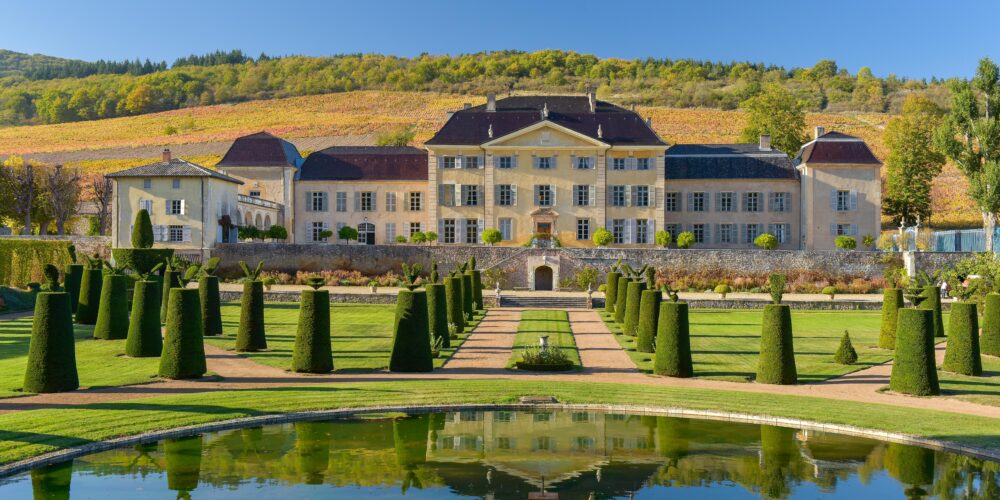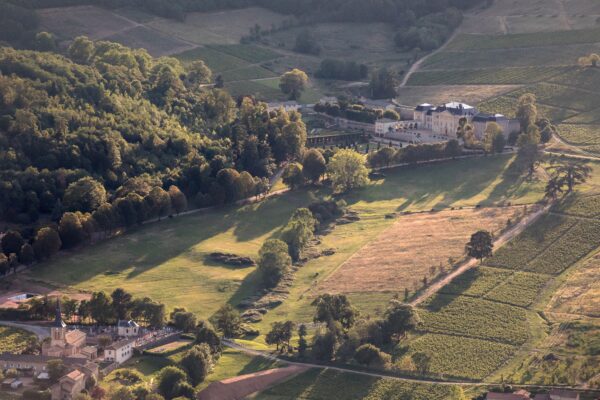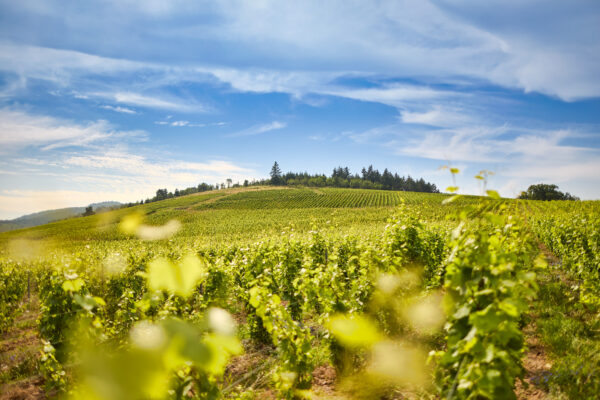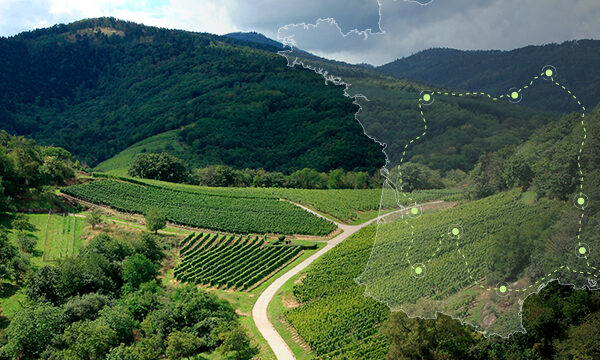Discover the captivating history of Château de la Chaize, a jewel steeped in history and a prestigious vineyard within Beaujolais. Immerse yourself in a world where elegant architecture, exceptional vineyards, and respect for nature converge. Let yourself be charmed by the secrets of this exceptional estate, where the past harmoniously blends with the future of organic viticulture.
A historical heritage
The Château de la Chaize was erected approximately 350 years ago by the La Chaize family. With its elegant architectural elements and picturesque location, the castle quickly became a symbol of prestige and refinement.
Over the centuries, the castle has witnessed numerous historical events, ranging from political changes to industrial revolutions. Each era has left its mark on the castle, which has adapted and transformed while preserving its charm of yesteryear.
Since 2017, Boris Gruy and his family have been working on the restoration of the historical heritage of this fabulous Château. The Clos has been notably rehabilitated recently. It is a walled vineyard which is also listed in the supplementary inventory of historical monuments. Only four in France benefit from this recognition.
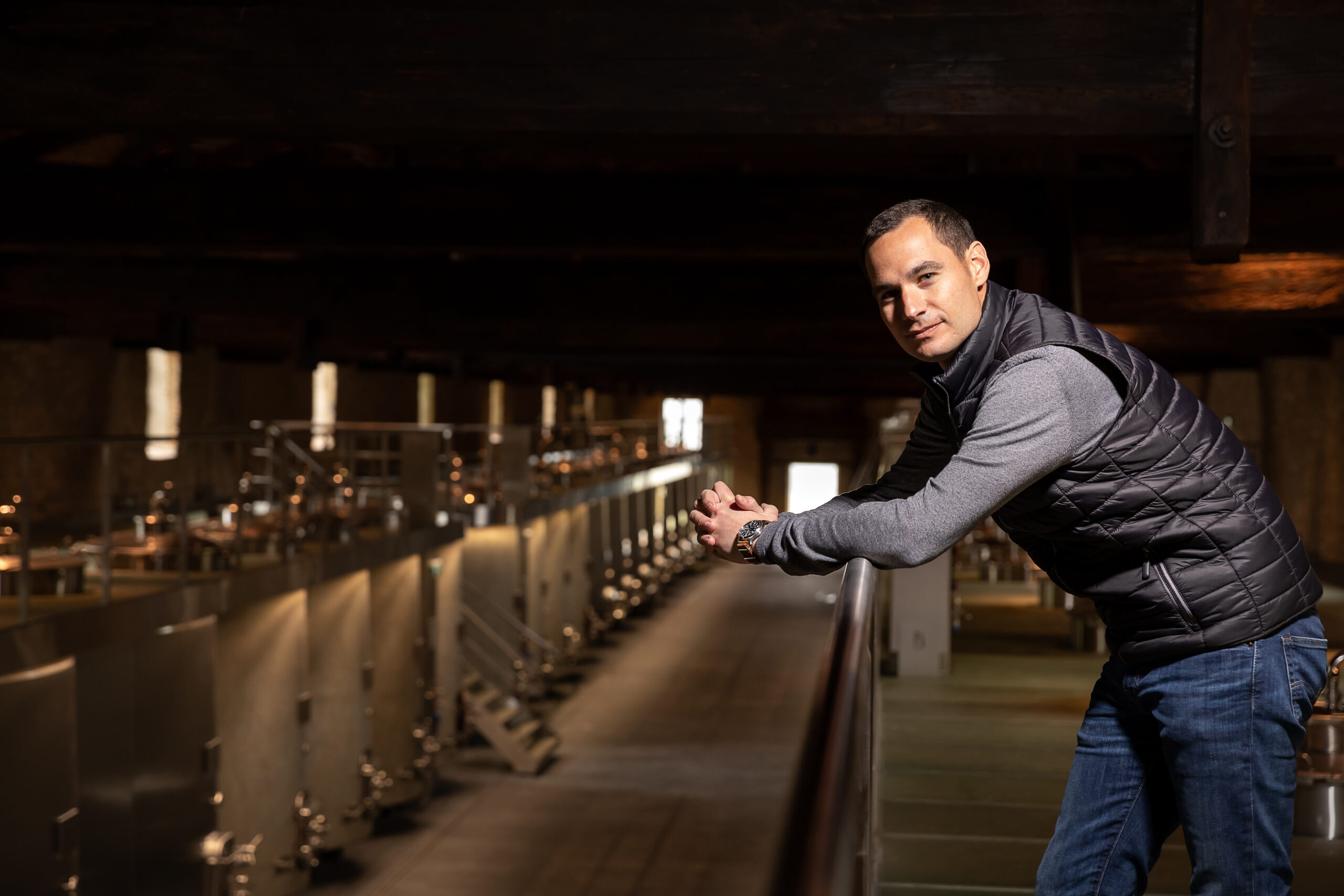
The Château de la Chaize covers a total area of 430 hectares, including forests, meadows, and vineyards. The estate has 150 hectares of vineyards, including 100 hectares of Brouilly, 22 hectares of Fleury, 21 and a half hectares of Côte de Brouilly, and three hectares of Morgon. It is currently the largest domain in Beaujolais.
A progressive conversion to respect the soils and biodiversity
The vineyard of Château de la Chaize is composed of different appellations such as Brouilly, Côte de Brouilly, Fleury, and Morgon. They started the organic certification process in 2019 and were certified for the 2022 vintage for the Brouilly appellation. The team at Château de la Chaize is currently working on three other crus: Côte de Brouilly, Fleury, and Morgon. They will be certified organic by 2024.
The staggered conversion steps help preserve the quality of the soils by gradually uprooting and replanting certain plots.
Adapting pruning methods for respectful mechanization
Soil mechanization poses a significant challenge during the transition to organic farming. The high planting densities of Beaujolais, similar to those of Burgundy, require specific pruning methods.
At Château de la Chaize, the traditional goblet pruning has been transformed into Royat cordon pruning. This method is much more suitable for trellising that lies on a plane. It allows mechanization at the base of the vines and facilitates soil work to mechanically remove weeds. Unlike goblet pruning, which is cumbersome and does not allow for mechanical pruning without damaging the arms. Thus, Royat cordon pruning enables better yields and simpler mechanization.
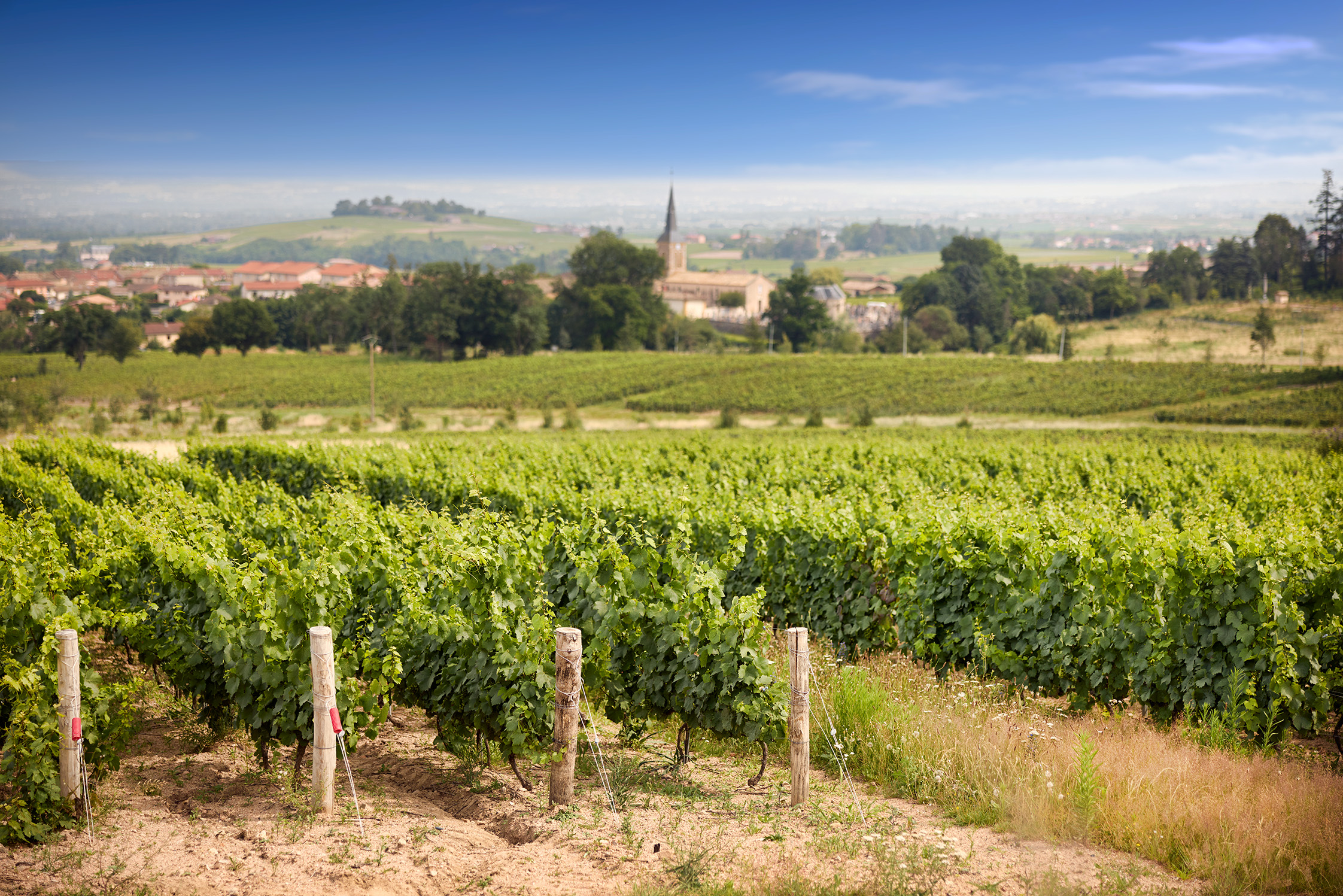
Mastering yields to prioritize quality
The pursuit of high yields is not the goal of Château de la Chaize. Significant variations in altitude within the vineyard affect the ripening of grapes. By controlling yields, winemakers can obtain riper grapes, essential for producing quality wines.
The transition to organic farming creates disruptions in the vineyards, resulting in quite significant yield decreases.
We have averaged around 30 to 32 hectoliters per hectare over the past three years. We hope it will slightly increase afterwards, but we will never reach the maximum yield,”
explains Boris Gruy. However, quality remains at the heart of Château de la Chaize’s ambitions. The estate features considerable variations in altitude, ranging from 280 to 480 meters. There is nearly two hundred meters of elevation difference between the lowest and highest areas. Vineyards located at higher altitudes, during cooler years, struggle more to ripen. That’s why mastering yields is so crucial. Indeed, the heavier the vine load, the more difficult it is to achieve optimal grape ripening. When the load is lighter, the grapes manage to ripen properly, even at higher altitudes, reaching the desired maturity. Thus, they offer fully mature wines, without vegetal flavors.
Tailored treatments for sustainable viticulture
Château de la Chaize uses treatments approved by organic agriculture, such as copper and sulfur. As early as 2018, even before beginning the conversion, the team decided to train the vine to these approved treatments.
Furthermore, products based on algae and orange peels are used to strengthen the vine’s defenses and reduce copper doses. These practices help preserve soil health and avoid excessive copper accumulation. Thus, the product has the ability to simulate a downy mildew attack on the vine leaf. Subsequently, the vine reacts to this attack by strengthening the thickness of its epidermis.
This allows us to reduce our copper doses, as copper is a metal that accumulates in the soil,”
explains Boris Gruy.
Natural grass cover and innovative trials
The estate is experimenting with new practices, including natural grass cover between the vine rows. This helps regulate soil temperature and prevent cluster sunburn. Legume seeding is also carried out to enrich the soil with nitrogen and promote biodiversity.
Château de la Chaize is also exploring the use of hemp felt mulching to maintain soil moisture.
It’s not entirely convincing, but we want to have more perspective, so we’re letting the years go by to see what it will yield after five or ten years on the vine,”
expresses Boris Gruy. “A domain that is giving itself the time to test all possibilities and find the best ones for the vine.”
The Domaine de la Chaize, an alliance between exceptionality and respect for nature
In conclusion, Château de la Chaize is committed to a process of conversion to organic farming, placing great importance on soil preservation, grape quality, and environmental respect. The efforts undertaken reflect the domain’s determination to produce quality wines while preserving the terroir and biodiversity.
To learn more
Discover the full interview with Boris Gruy in our episode of ‘Bruit de la Vigne’ filmed at Château de la Chaize.
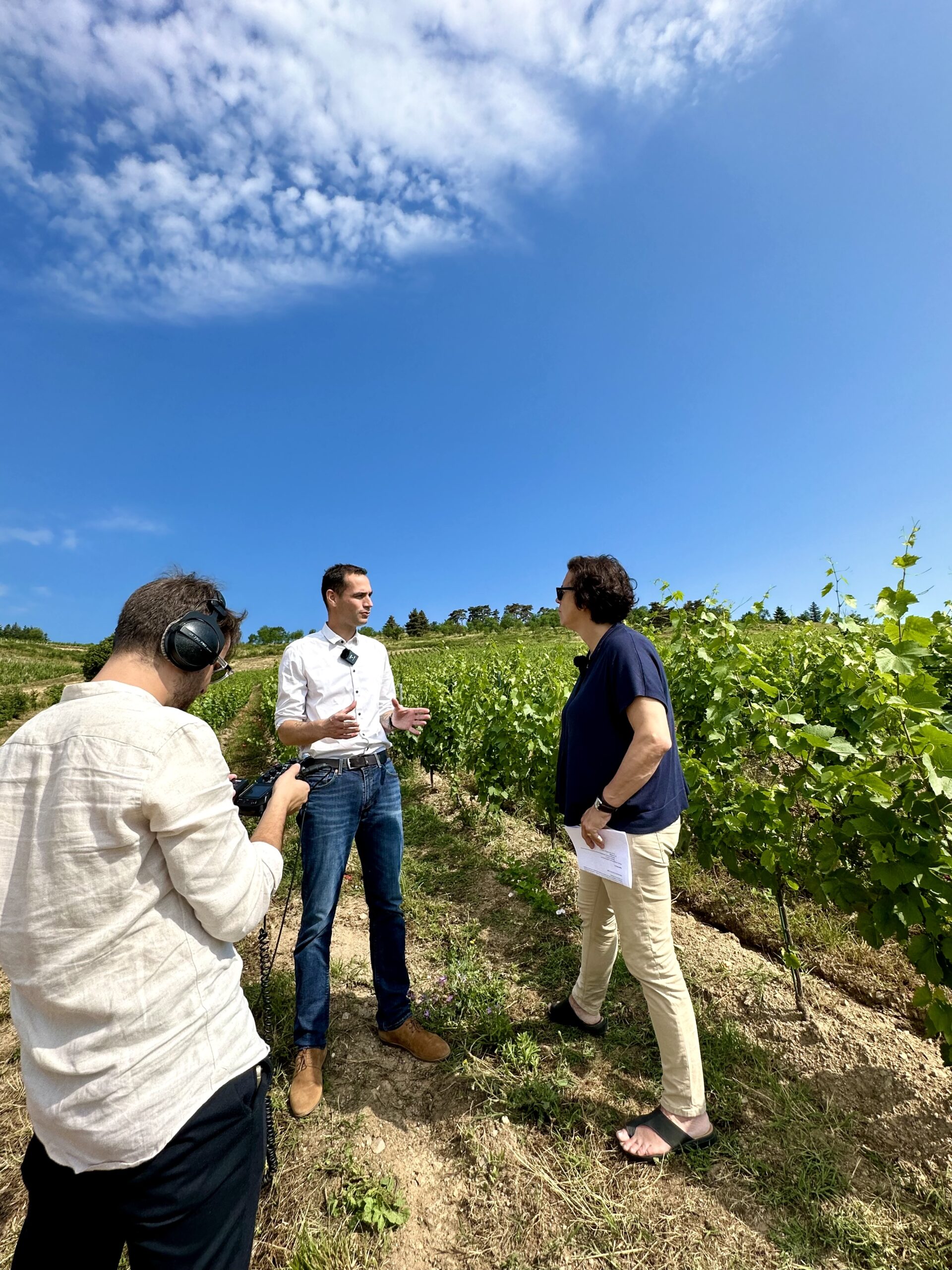
To delve deeper
Would you like to learn more about the vineyards of Beaujolais? Explore our article dedicated to this region.
